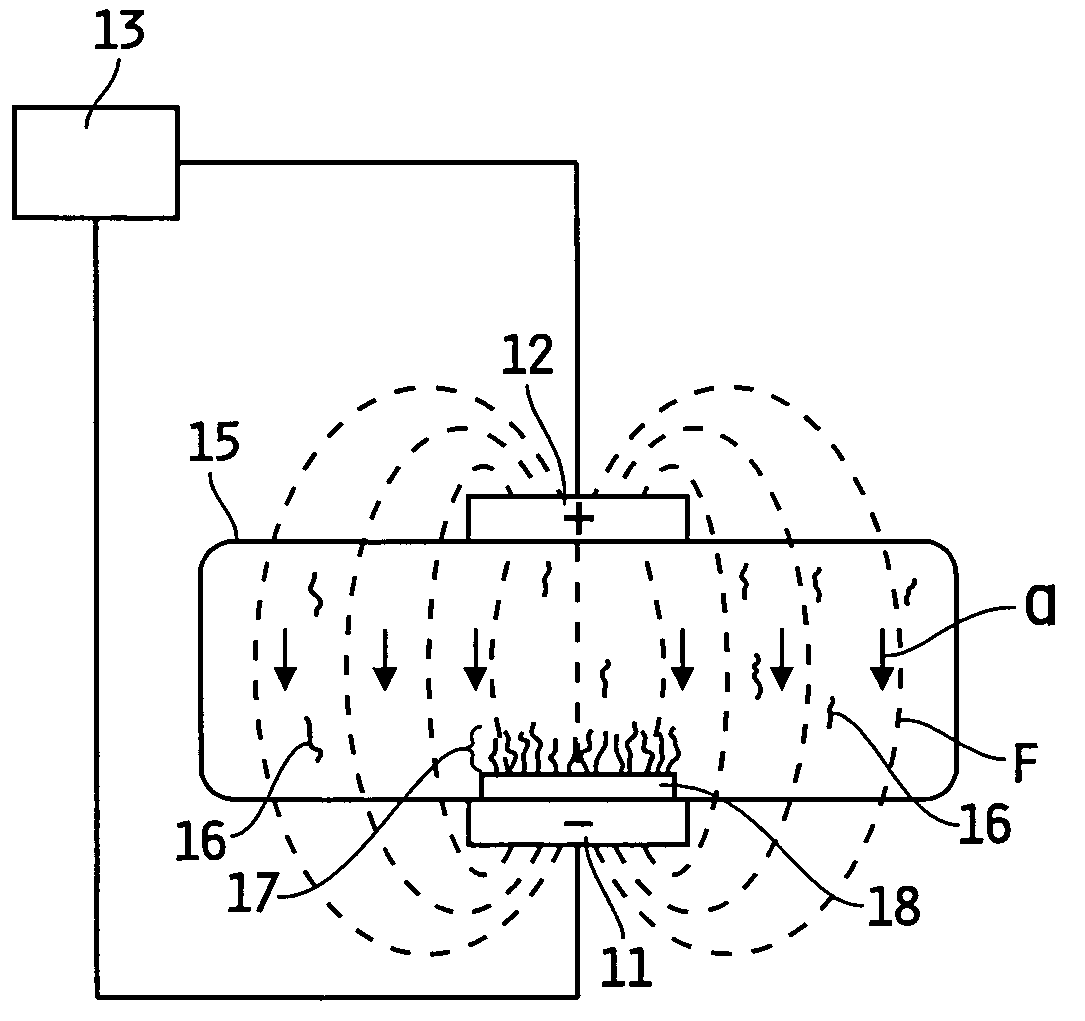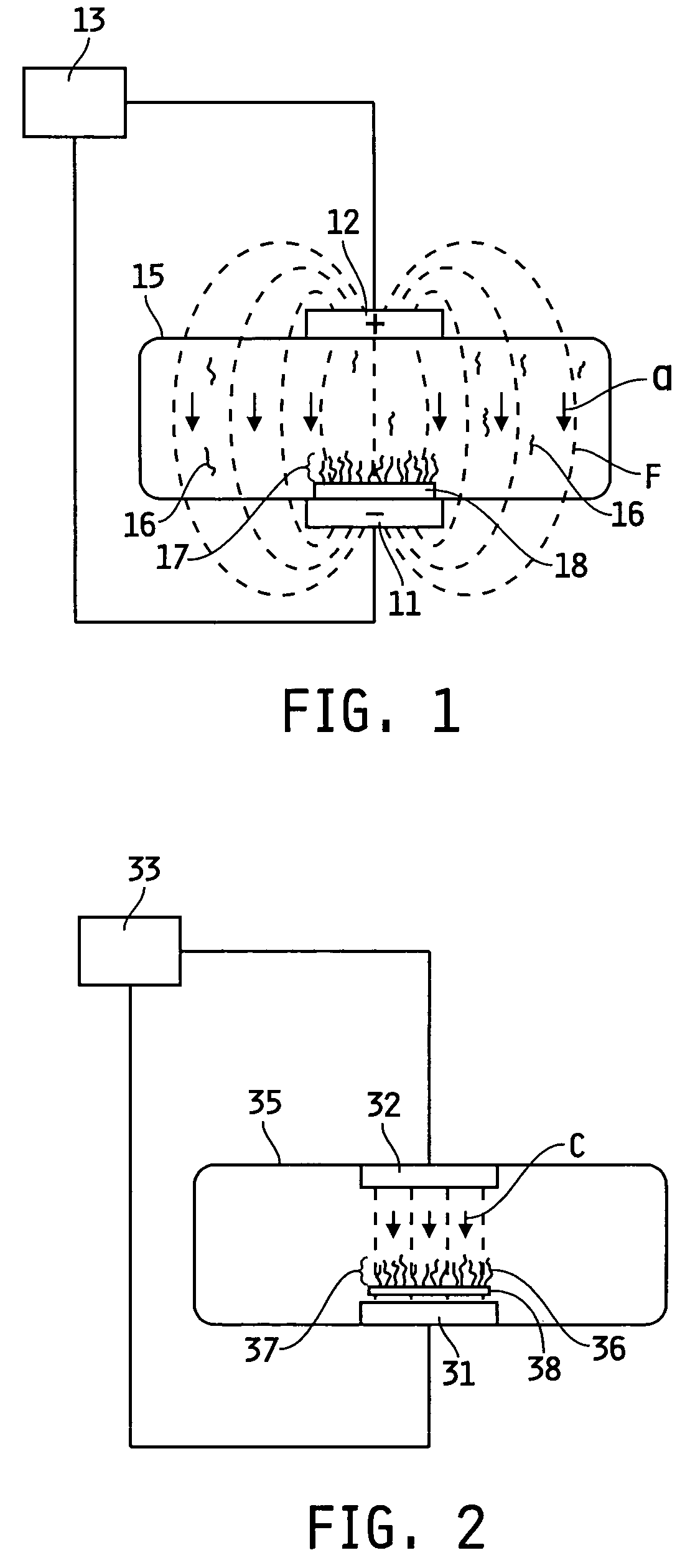Method for organizing the assembly of collagen fibers and compositions formed therefrom
a technology of collagen fibers and compositions, applied in the field of biomaterials, can solve the problems of fiber strength and lack of desirable characteristics of the scaffolding, and achieve the effect of better supporting the cell
- Summary
- Abstract
- Description
- Claims
- Application Information
AI Technical Summary
Benefits of technology
Problems solved by technology
Method used
Image
Examples
embodiments
[0027]The typical process of self assembling of a protein involves protein molecules or fibers joining together randomly to form a protein polymer. The randomly arranged fibers in the resulting protein polymer may provide insufficient mechanical strength for certain biomedical applications. As disclosed herein a method is provided for assembling polymer matrices wherein the component polymer fibers are ordered so that the resulting protein polymer has a predefined fiber arrangement and directionality.
[0028]The ordered polymer complexes disclosed herein are prepared in accordance with one embodiment of the present invention by applying an energy such as electrical energy or gravitational energy to affect the orientation of the monomer fibers that form the resulting polymer complex. These types of energy may also be combined with chemical energy or thermal energy to enhance the assembling process.
[0029]In accordance with one embodiment electrical energy is used to organize large molec...
example 1
Alignment of Collagen Fibers Through the Use of an Electrical Field
[0046]A solution of Col I protein (SISH solution) was prepared from swine intestinal submucosa (SIS). The SISH solution has Col I protein concentration of about 0.1 to about 1.2 mg / ml. A 5 ml SISH solution was poured into a 3 cm Petri dish and covered. The Petri dish was placed in a chamber with two electrodes, one above and one below. The electrodes were not in contact with the SISH solution contained within the Petri dish. A metal disk was placed inside the covered Petri dish in a manner that places the SISH solution in intimate contact with the metal disk, and positions the disk right above the bottom electrode, separated by the bottom surface of the Petri dish. When the power supply was turned on, an electric field density of 1.23×10−8 to about 1.106×10−6 Joules / m3 was created across the protein solution. After 1-5 hours at room temperature (20-25° C.), about 0.01% to about 10% of a 3M ammonium sulfate, (NH4)2SO4...
example 2
Alignment of Collagen Fibers Through the Use of an Electrical Current
[0048]A solution of Col I protein (SISH solution), at a concentration of about 0.1 to about 1.2 mg / ml, was poured into a Petri dish and covered. One electrode was placed at the bottom of the plate and another electrode was placed at the top of the plate. Both electrodes were in contact with the protein solution. A disk was provided at the bottom of the plate above the bottom electrode. The distance between the electrodes varied from about 0.5 cm to about 1.0 cm. The electrodes were connected to a power supply, set at between about 10 and 50 mA. The current was flowing from the top electrode to the bottom electrode. The set up was incubated at room temperature for about one hour. During the one hour period, the deposition was immediately apparent and could be corroborated by Fourier transform infrared spectroscopy (FTIR). It was observed that the higher the current, the faster the protein deposition was. The protein...
PUM
| Property | Measurement | Unit |
|---|---|---|
| temperature | aaaaa | aaaaa |
| current | aaaaa | aaaaa |
| current | aaaaa | aaaaa |
Abstract
Description
Claims
Application Information
 Login to View More
Login to View More - R&D
- Intellectual Property
- Life Sciences
- Materials
- Tech Scout
- Unparalleled Data Quality
- Higher Quality Content
- 60% Fewer Hallucinations
Browse by: Latest US Patents, China's latest patents, Technical Efficacy Thesaurus, Application Domain, Technology Topic, Popular Technical Reports.
© 2025 PatSnap. All rights reserved.Legal|Privacy policy|Modern Slavery Act Transparency Statement|Sitemap|About US| Contact US: help@patsnap.com



